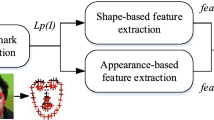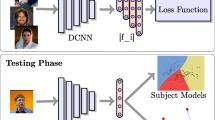Abstract
A fundamental task in artificial intelligence and computer vision is to build machines that can behave like a human in recognizing a broad range of visual concepts. This paper aims to investigate and develop intelligent systems for learning the concept of female facial beauty and producing human-like predictors. Artists and social scientists have long been fascinated by the notion of facial beauty, but study by computer scientists has only begun in the last few years. Our work is notably different from and goes beyond previous works in several aspects: 1) we focus on fully-automatic learning approaches that do not require costly manual annotation of landmark facial features but simply take the raw pixels as inputs; 2) our study is based on a collection of data that is an order of magnitude larger than that of any previous study; 3) we imposed no restrictions in terms of pose, lighting, background, expression, age, and ethnicity on the face images used for training and testing. These factors significantly increased the difficulty of the learning task. We show that a biologically-inspired model with multiple layers of trainable feature extractors can produce results that are much more human-like than the previously used eigenface approach. Finally, we develop a novel visualization method to interpret the learned model and revealed the existence of several beautiful features that go beyond the current averageness and symmetry hypotheses.
Chapter PDF
Similar content being viewed by others
Keywords
These keywords were added by machine and not by the authors. This process is experimental and the keywords may be updated as the learning algorithm improves.
References
Cross, J., Cross, J.: Age, Sex, Race, and the Perception of Facial Beauty. Developmental Psychology 5, 433–439 (1971)
Aarabi, P., Hughes, D., Mohajer, K., Emami, M.: The automatic measurement of facial beauty. In: IEEE International Conference on Systems, Man, and Cybernetics, vol. 4 (2001)
Alley, T., Cunningham, M.: Averaged faces are attractive, but very attractive faces are not average. Psychological Science 2, 123–125 (1991)
Grammer, K., Thornhill, R.: Human (Homo sapiens) facial attractiveness and sexual selection: the role of symmetry and averageness. J. Comp. Psychol. 108, 233–242 (1994)
Zhou, Y., Gu, L., Zhang, H.: Bayesian tangent shape model: estimating shape and pose parameters via Bayesian inference. In: IEEE Computer Society Conference on Computer Vision and Pattern Recognition, vol. 1 (2003)
Eisenthal, Y., Dror, G., Ruppin, E.: Facial Attractiveness: Beauty and the Machine (2005)
Kagian, A., Dror, G., Leyvand, T., Cohen-Or, D., Ruppin, E.: A Humanlike Predictor of Facial Attractiveness. In: Advances in Neural Information Processing Systems, pp. 649–656 (2005)
Guo, D., Sim, T.: Digital face makeup by example. In: IEEE Computer Society Conference on Computer Vision and Pattern Recognition (2009)
Hubel, D., Wiesel, T.: Receptive fields and functional architecture of monkey striate cortex. The Journal of Physiology 195, 215–243 (1968)
Likert, R.: Technique for the measurement of attitudes. Arch. Psychol. 22, 55 (1932)
Oliva, A., Torralba, A.: Modeling the Shape of the Scene: A Holistic Representation of the Spatial Envelope. International Journal of Computer Vision 42, 145–175 (2001)
Chopra, S., Hadsell, R., LeCun, Y.: Learning a similarity metric discriminatively, with application to face verification. In: IEEE Computer Society Conference on Computer Vision and Pattern Recognition, vol. 1 (2005)
Fukushima, K.: Neocognitron: A hierarchical neural network capable of visual pattern recognition. Neural Networks 1, 119–130 (1988)
Hubel, D., Wiesel, T.: Receptive fields, binocular interaction and functional architecture in the cats visual cortex. Journal of Physiology 160, 106–154 (1962)
Huang, G., Jain, V., Amherst, M., Learned-Miller, E.: Unsupervised Joint Alignment of Complex Images. In: IEEE International Conference on Computer Vision (2007)
Gunes, H., Piccardi, M., Jan, T.: Comparative beauty classification for pre-surgery planning. In: IEEE International Conference on Systems, Man and Cybernetics, vol. 3 (2004)
Joy, K., Primeaux, D.: A Comparison of Two Contributive Analysis Methods Applied to an ANN Modeling Facial Attractiveness. In: International Conference on Software Engineering Research, Management and Applications, pp. 82–86 (2006)
Author information
Authors and Affiliations
Editor information
Editors and Affiliations
Rights and permissions
Copyright information
© 2010 Springer-Verlag Berlin Heidelberg
About this paper
Cite this paper
Gray, D., Yu, K., Xu, W., Gong, Y. (2010). Predicting Facial Beauty without Landmarks. In: Daniilidis, K., Maragos, P., Paragios, N. (eds) Computer Vision – ECCV 2010. ECCV 2010. Lecture Notes in Computer Science, vol 6316. Springer, Berlin, Heidelberg. https://doi.org/10.1007/978-3-642-15567-3_32
Download citation
DOI: https://doi.org/10.1007/978-3-642-15567-3_32
Publisher Name: Springer, Berlin, Heidelberg
Print ISBN: 978-3-642-15566-6
Online ISBN: 978-3-642-15567-3
eBook Packages: Computer ScienceComputer Science (R0)




